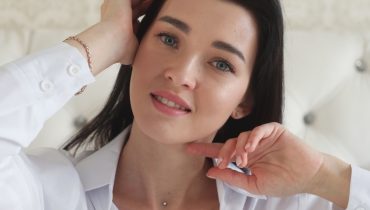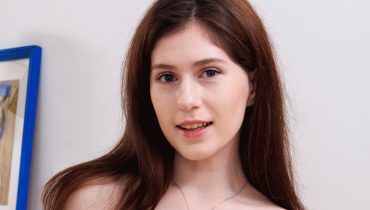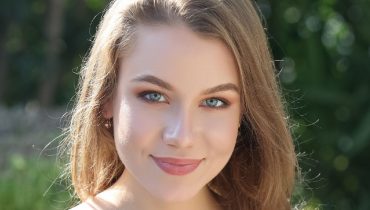For most of her adult life, Eleanor Price was the type of woman people described as “high-functioning.” She showed up early, volunteered for extra tasks, kept a meticulously organized calendar, and rarely admitted when she felt overwhelmed.
She took pride in being dependable, in being the person others leaned on. But what no one saw was the gradual unraveling happening beneath her steady exterior—tightness in her chest that never fully disappeared, scattered thoughts she had trouble gathering, and an exhaustion that seeped deeper than any night of sleep could repair.
“I didn’t realize how far I had drifted from myself,” she recalls. “I kept pushing, thinking recovery would just happen on its own. It didn’t.”
The breaking point came one winter morning when Eleanor woke with a strange heaviness in her body—an ache that wasn’t exactly pain, but a kind of internal stiffness, as if her muscles had forgotten how to let go. Her mind was equally rigid. Thoughts felt trapped inside tight, spiraling loops. Nothing felt spacious or breathable. It was the kind of fatigue that didn’t respond to rest, the kind that came from living in a constant state of tension.
That morning, she opened her laptop, typed “how to heal chronic stress without medication,” and fell into a deep exploration of something she had always admired from afar but never truly understood: yoga. She had seen it in studios, in fitness apps, in city parks, but she had never thought of it as something connected to internal healing—mental clarity, emotional release, and deep physical recovery.
Yoga, in her mind, had always been stretching. A workout. A trend. But the more she read, the more she realized that she had mistaken the visible form for the invisible function. Beneath the poses and mats and studio playlists lay a system designed not just for flexibility, but for nervous system regulation, trauma release, endocrine balance, and mental grounding. For the first time in months, she felt something like hope.
“It wasn’t that yoga looked easy,” she said. “It was that it looked like it understood what I was going through better than I did.”
Finding yoga not as exercise, but as recovery
Eleanor started her first yoga practice in the quiet corner of her living room, following a beginner video. She expected stiffness. She expected imbalance. She even expected mild frustration. What she did not expect was the emotional shift that happened within the first ten minutes—a sense of being gently pulled back into her own body, as if someone had untangled a knot she didn’t know she was carrying around in her throat and chest.
Her breath slowed without her forcing it. Her thoughts, usually scattered like leaves in wind, began to descend and settle. Her shoulders softened in a way she hadn’t felt for years. The movement didn’t feel like exertion; it felt like relief.
That night, she slept more deeply than she had in months.
It was then she realized something essential: yoga was not simply a physical discipline, but a recovery system—one that worked on multiple layers at once. Physically, it addressed the tightness she carried. Mentally, it quieted the buzzing static that had become her normal. Emotionally, it offered a safe space to unravel and rebuild without judgment or pressure.
She began reading more, and one of the articles that stayed with her was a research overview from Harvard Health that explained how yoga helps regulate the stress response system, lower cortisol, and rebalance the autonomic nervous system. It wasn’t just inspirational—it was physiological.
Harvard Health – Yoga benefits beyond the mat
This connection—between evidence and lived experience—became the anchor of her practice. Yoga wasn’t just moving the body. It was recalibrating it.
The body remembers tension more deeply than we realize
Before yoga, Eleanor had always assumed that stress lived primarily in the mind. If she felt overwhelmed, she focused on thinking her way out—making lists, reorganizing her calendar, adjusting expectations. But yoga taught her something entirely different: stress lives in the body long after the mind believes it has moved on.
Every unresolved conflict, every self-imposed deadline, every sleepless night, every suppressed emotion left traces in her neck, her back, the muscles around her ribs. It was as if tension had been storing itself in layers, waiting for a moment when she finally slowed down enough to notice it.
In her first few weeks of yoga, Eleanor experienced an unexpected phenomenon—spontaneous tears during certain poses. Not sadness, not despair. Just a sudden, involuntary letting go. She later learned that this is common when the body releases stored emotion through physical release. The stretching, the breathing, the held postures all speak to parts of the nervous system that language cannot reach.
Yoga allowed her body to finally process what her mind had been trying to ignore.
Breath as the bridge between mental and physical recovery
One of the earliest and most profound lessons Eleanor learned was that recovery begins with breathing. Not the shallow, automatic breath she used throughout stressful days, but slow, diaphragmatic breathing that signals safety to the nervous system.
In yoga, breath is not an accessory to movement; it is the foundation. Eleanor discovered that when she breathed intentionally—when the inhale expanded her ribs fully and the exhale lengthened—her entire internal landscape changed. Her pulse lowered. Her jaw unclenched. Her thoughts thinned out, like clouds drifting apart.
“It felt like I was exhaling stress in real time,” she said.
Over time, she came to see breathing as a form of self-communication. A way to tell her body, “You are safe. You can soften. You can rest.” In turn, her body responded with deeper release, better circulation, and a quiet recalibration of systems she hadn’t even realized were dysregulated.
The slow rebuilding of a relationship with her body
Yoga also changed how Eleanor felt about her physical self. Before, she saw her body as a vehicle—a thing she needed to manage so she could work, function, and produce. Yoga reframed it as a relationship. When she paid attention to her body, it responded. When she ignored it, it tightened. When she moved with care, it opened. When she forced it, it resisted.
This relational approach restored something she had lost during years of stress: respect. Not vanity, not aesthetic focus, but the simple respect of listening. She learned that recovery required cooperation. Yoga was not her body fighting through discomfort; it was her body learning to trust softness again.
There was a particular moment during a slow stretching session when she realized she had spent years bracing—shoulders lifted, abdomen tight, breath shallow. Yoga became a way of teaching her body not to brace for impact, but to welcome ease.
The shift from effort to presence
One of the early challenges Eleanor faced was her instinct to treat yoga like a task to accomplish. She wanted to “get good at it,” to “do it right,” to move through sequences with perfect form. But yoga resisted that approach. In fact, the more she pushed herself physically, the less grounded she felt mentally.
Recovery-focused yoga is not about perfect postures; it’s about internal orientation. It is about presence rather than performance. Once Eleanor let go of the idea of achievement, her practice deepened dramatically. She began approaching each pose not as a goal but as a conversation. Instead of forcing her body into shapes, she asked what her body was ready for that day.
Some days, her hips opened easily. Other days, everything felt glued together. Yoga taught her to respect the fluctuations of her internal world. And this respect became the core of her recovery—learning to adapt, to respond, to be present with what she found rather than pushing against it.
How yoga improved her mental recovery
As weeks passed, Eleanor noticed changes in her mental landscape. The background hum of stress quieted. Small frustrations no longer spiraled into emotional avalanches. She found herself thinking more clearly, reacting more slowly, speaking more gently. It wasn’t that yoga made her carefree—but it made her resilient.
The mental recovery came from the union of movement and breath. Each practice session was a rehearsal for calm attention: focusing on the body, feeling sensations without judgment, redirecting the mind when it wandered, releasing tension without needing to fix everything immediately.
What surprised her most was how much gentleness contributed to resilience. She had always believed that strength meant endurance, grit, and pushing harder. Yoga taught her that strength could also mean softness, flexibility, and the courage to release control.
How yoga restored her physical recovery
Physically, the changes were just as significant. Eleanor had lived with chronic back tightness for years and assumed it was a permanent part of adulthood. But as her practice deepened, the tightness shifted. She began sleeping more comfortably. Her steps felt lighter. She regained mobility she hadn’t realized was missing.
More importantly, her nervous system began responding differently to stress. Instead of locking her muscles in anticipation during difficult days, her body held onto less tension. Yoga had strengthened not only her muscles but the signals between them and her mind.
Physical recovery, she learned, is not only about repairing damage—it is about preventing unnecessary strain in the first place.
A gentle transformation
Months into her journey, Eleanor noticed something quietly extraordinary: she no longer woke with a tight chest. She no longer carried the heaviness that had once made her mornings feel like uphill climbs. Her sleep deepened. Her mood steadied. Her thoughts softened.
Yoga had not erased her stress, but it had transformed her relationship to it. The world didn’t change—but her body’s way of meeting the world did.
Eleanor’s quiet guidance
When asked what she would tell someone beginning yoga for mental and physical recovery, Eleanor offers a simple truth: “Go slowly. Let your body teach you. Let your breath guide you. And give yourself permission to be exactly where you are.”
Recovery, she learned, is not a destination but a practice. Yoga became the pathway—a daily ritual of returning, rebalancing, and remembering who she was before life became so loud.




























































